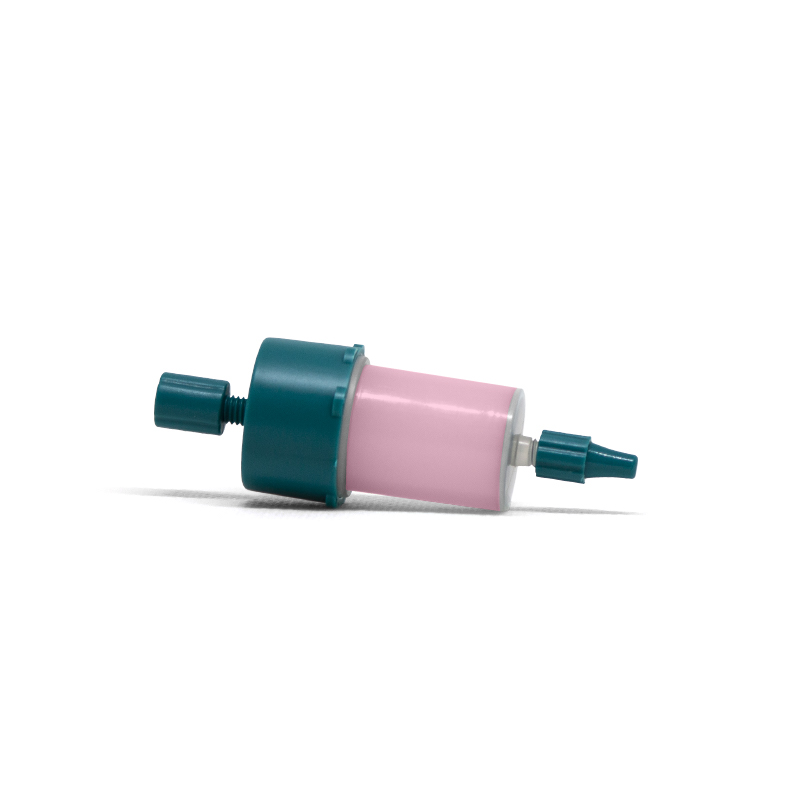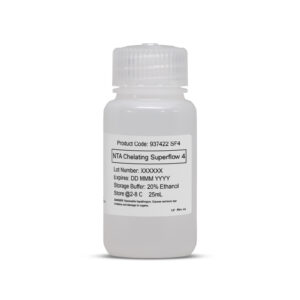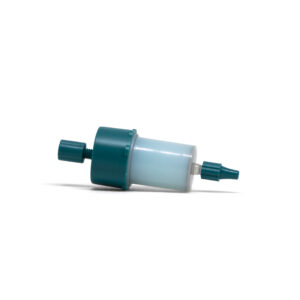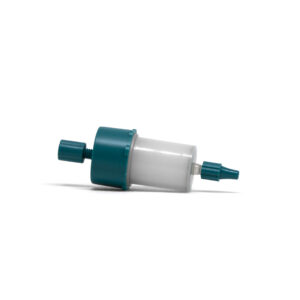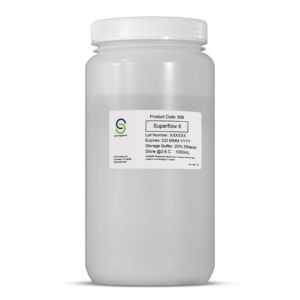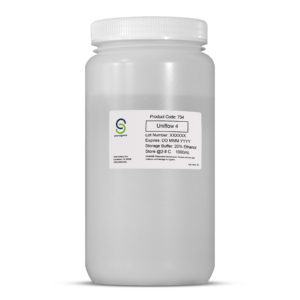Table 1. Resin Characteristics
| Bead Material
| Agarose |
| Bead Percentage
| 4% |
| Bead Size | 60-160 µm |
| Flow Rate1 | >30 mL/min (>1020 cm/hr) @ 25oC |
| AT3 Binding
| >6 mg/mL |
| pH Stability2 | 2-14 |
| Storage Temperature | 2-8o C |
| Storage Buffer
| 20% Ethanol |
| Form | Slurry |
| Chemical Stability2 | Avoid EDTA, EGTA, DTT, as well as other reducing agents and metal chelators. The use of primary amines (Tris, glycine, etc.) can weaken binding affinity and should not be utilized. Reactions in which detergents like Guanidine HCl (<6M) and Urea (<8M) are incorporated can be used sparingly. For the use of detergents and other additives, please consult the literature. |
| Physical Stability2 | Negligible volume variation due to changes in pH or ionic strength. |
1Linear flow rate = volumetric flow rate (cm3/h)/column cross-sectional area (cm2)
2Data refer to the coupled product, provided that the ligand can withstand the pH or chemical environment. Please note the following: pH stability, long term refers to the pH interval where the medium is stable over a long period of time without adverse effects on its subsequent chromatographic performance. pH stability, short term refers to the pH interval for regeneration and cleaning procedures.
Instructions for Use
Cobalt Chelating Superflow 4
Cobalt Chelating Superflow 4 is an immobilized metal affinity chromatography (IMAC) resin that separates proteins via their differences in affinity to Co2+. There are a number of metal-chelating resins that differ by how strongly they bind a given metal. For instance, NTA resin is a tetra-dentate chelator, leaving two coordination sites on a transition metal available to bind complexing moieties on proteins, such as Histidine repeats. TED resins are penta-dentate, leaving one less coordination site in the chelated metal for binding proteins. Thus, TED typically has less binding capacity than NTA. IDA Chelating resins are tri-dentate and typically have very high binding capacities in comparison to other chelators but bind the metal with less affinity. Cobalt Chelating Superflow 4 is a proprietary tridentate chelator. It is recommended for clarified feed streams.
Most IMAC purifications require some degree of method development for optimization. The protocol below is meant as an example for His-tagged protein purification.
Protocol:
Reagents:
Equilibration buffer: 50mM Sodium Phosphate, 0.3M NaCl, 10mM Imidazole, pH 8.0.
Wash buffer: 50mM Sodium Phosphate, 0.3M NaCl, 20mM Imidazole, pH 8.0.
Elution buffer: 50mM Sodium Phosphate, 0.3M NaCl, 250mM Imidazole, pH 8.0.
Method for His-tagged Protein Purification:
1. Wash resin with deionized water and prepare a 1:1 slurry. Place 400µl of slurry (200µl resin) into 5ml column with frit.
2. Equilibrate resin two times with 2ml of equilibration buffer for 2 minutes while mixing.
3. Remove and discard supernatant.
4. Load 2ml of 6XHN Beta Galactosidase Lysate (if lysate does not contain Imidazole, add to final concentration of 10mM by using 3M stock solution, pH 7.0) to resin.
5. Mix the solution for 30 minutes at room temperature.
6. Collect supernatant after 30 minutes mixing (take sample of unbound fraction for SDS-PAGE analysis).
7. Wash resin four times with 2ml of wash buffer.
8. Elute two times with 500µl of elution buffer for 10 minutes while mixing.
9. Collect and combine both elution fractions. Perform SDS-PAGE analysis.
Method for Cleaning:
The 50% ethanol wash step in the regeneration procedure described below will usually suffice to clean the resin thoroughly. Our IMAC media are also tolerant to 8M Gaunidine, 6M Urea, and high salt conditions. If contact time is less than 2 hours, 0.5M NaOH may also be used to clean the resin.
Store Cobalt Chelating Superflow resin as a 70% slurry with 20% Ethanol at 2-8 °C.
Cobalt Chelating Superflow resin should be regenerated after each use.
Method for Regeneration:
1. Wash the column with 3 bed volumes (BV) of 50mM Tris, 1M NaCl, pH 8.5 containing 1% Triton X-100.
2. Wash the column with 3 BV of DI water.
3. Wash the column with 3 BV of 20mM Sodium Acetate, 1M NaCl, pH 4.5 containing 1% Triton X-100.
4. Wash the column with 5 BV of DI water.
5. Wash the column with 5 BV of 50% Ethanol.
6. Wash the column with 3 BV of 20% Ethanol.
7. Wash the column with 3 BV of DI water.
8. Wash the column with 5 BV of 100mM EDTA, pH 8.0.
9. Wash the column with 5 BV of DI water.
10. Recharge the column with 4 BV of 150mM CoCl2.
11. Wash the column with 5 BV of DI water.
12. Wash the column with 3 BV of running buffer, or store in 20% Ethanol.
To Download Instructions for use:
INST 37409SF4 Cobalt Chelating Superflow 4
